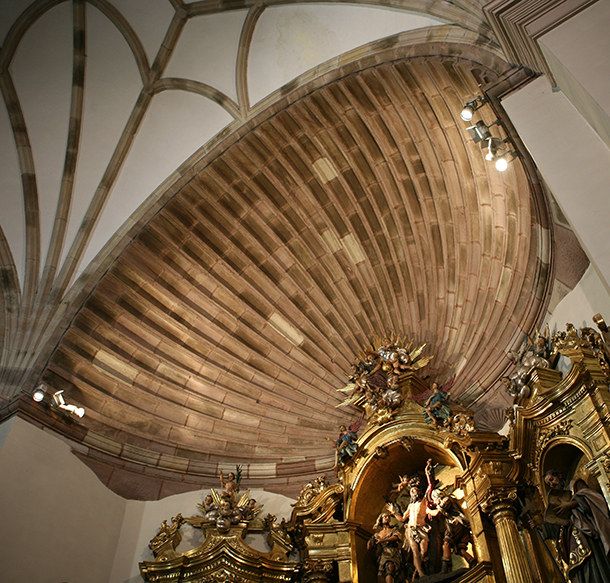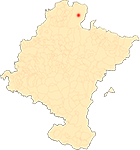Renaissance churches in the Baztan valley
By María Josefa Tarifa Castilla
The reception of Renaissance architectural theory: the avenerate roofs
The parish churches of Ziga, Gartzain and Lekaroz have a characteristic that the rest of the churches in the Baztan valley built in the 16th century do not have, a singularity that in turn makes them participants in the assimilation of Renaissance forms in their Mannerist phase, and that is the employmentof a stone venerable or galloned shell to cover the apsidal space. Temples, therefore, which are the latest fashion in the roofing system employee, by using other forms of vaulting of the classical subject, as opposed to the omnipresent ribbed vaults existing in the rest of the churches in Navarre in the fifteenth century. An avant-garde covering in the context of Hispanic architecture of the Renaissance, which was being undertaken by the stonemasons who worked in this century in the most artistically advanced centres of the peninsular territory, under the orders of prominent architects such as Diego de Siloe, Jerónimo Quijano and Martín de Gainza, among others.
The execution of this subjectof vaulting required a high knowledgein stereotomy, that is, the necessary technique in the cutting of the stones that allow their application in the construction, as is recorded in the Libro de traças de cortes de piedras by Alonso de Vandelvira, in one of whose pages he explains the way to undertake this covering of concha avenerada. To execute this roofing subject, the master stonemasons had to have a great knowledgeof the geometric design, as it is necessary to have sufficient skillto develop the conical surfaces on a horizontal plane, for which they used patterns designed with a subjectsquare known as a baibel.
However, in Navarre, an area with a long tradition in the use of ribbed cross ribbing, this subjectwith its designribbed roofs was understood as a solution typical of the new Roman world, which is why it was hardly used in the northern area, being applied only to the parish churches of Eratsun, Beintza-Labaien, Narbarte, Oieregi and Lerín, the latter being the church where the stonemason Juan de Garaicoehea from Baztan worked from 1591 onwards.
ECHEVERRÍA GOÑI, P. L. and FERNÁNDEZ GRACIA, R., "Arquitectura religiosa de los siglos XVI al XVIII en Navarra", in Ibaiak eta Haranak, Guía del patrimonio histórico-artístico-paisajístico, t. 8, San Sebastián, Etor, 1991, pp. 175-216.
FERNÁNDEZ GRACIA, R., (coord.), ECHEVERRÍA GOÑI, P. L. Y GARCÍA GAINZA, M. C., El arte del Renacimiento en Navarra, Pamplona, Gobierno de Navarra, 2005.
GARCÍA GAINZA, M. C., ORBE SIVATTE, M., DOMEÑO MARTÍNEZ DE MORENTIN, A. and AZANZA LÓPEZ, J. J., Catalog Monumental de Navarra, V*. Merindad de Pamplona, Pamplona, Institución Príncipe de Viana, 1994, pp. 285-422.
OMEÑACA SANZ, J. M., "La iglesia parroquial de Ciga en el Baztan", Scripta Theologica, t. 16, 1984 / 1-2, pp. 543-552.
TARIFA CASTILLA, M. J., "The shell churches of the Renaissance in Baztan. Cuadernos de Artes Plásticas y Monumentales, San Sebastián, Sociedad de Estudios Vascos, 2009, pp. 333-405.











